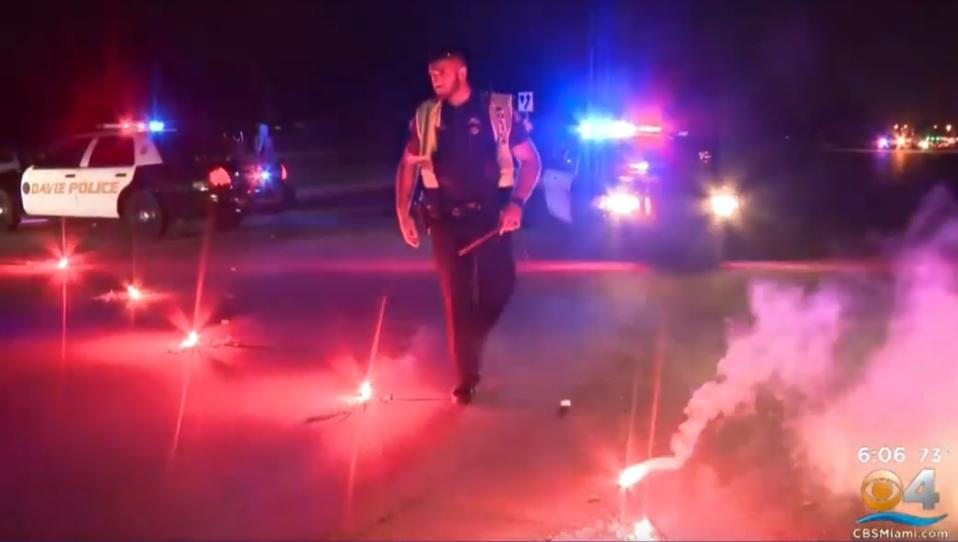VIDEO -OMAR AWAN - Tesla Driver Dies In Fiery Florida Crash—And Car’s Battery Still Burns A Day Later

Police respond to the Tesla crash in Davie, Florida, that killed Model S owner Omar Awan on February 24. CBS Miami via Youtube
A Tesla owner was killed in a fiery crash in Davie, Florida, Sunday afternoon and a day later local emergency officials were still contending with the car’s damaged lithium-ion battery pack that repeatedly reignited while sitting in a towing yard.
The man who died in the accident, Omar Awan, was driving on South Flamingo Road in Davie (which is north of Miami and adjacent to Fort Lauderdale) at about 4:30 p.m. local time when his 2016 Model S sedan veered off the road for an unknown reason, police spokesman Sergeant Mark Leone told Forbes. Awan then appears to have overcorrected the steering and lost control of the car, sending it across three lanes of traffic before it crashed into trees in the median, Leone said.
The car was engulfed in flames, leaving Awan’s body “burned beyond recognition” when it was finally removed from the car. Investigators don’t yet know whether the accident occurred because of a technical flaw in the car or if Awan experienced a health issue prior to losing control of the car, Leone said.
The vehicle was traveling at a high rate of speed, of between 75 mph and 90 mph, according to people who witnessed the accident, he said. The posted speed limit is 50 mph.

A section of South Flamingo Road, in Davie, Florida, near the site of a Tesla Model S crash indicates the posted speed limit is 50 mph. Omar Awan, who died accident was said to be driving between 75 mph and 90 mph when the accident occurred. Google Maps
“We are deeply saddened by this accident and our thoughts are with everyone affected by this tragedy,” Tesla said in an emailed statement. “We have reached out to the local authorities to offer our cooperation. We understand that speed is being investigated as a factor in this crash, and know that high-speed collisions can result in a fire in any type of car, not just electric vehicles.”
Unlike fires in crashes involving gasoline-powered cars, which tend to burn very rapidly, damaged electric car battery packs can reignite in chemical fires long afterward. In the Davie case, the pack in Awan’s Model S appears to have reignited at least three times since the accident, according to Leone and local media reports.
The potential for Tesla battery fires has been an issue of concern in the past, notably in 2013 when the company strengthened the protective metal casing after a number of fires caused when packs were damaged. The company also provides safety information and meets with first responders to help them deal with damaged Teslas.
“Battery fires can take up to 24 hours to extinguish. Consider allowing the battery to burn while protecting exposures,” the company said in its Emergency Response Guide. “Due to potential re-ignition, a Model S that has been involved in a submersion, fire, or a collision that has compromised the high voltage battery should be stored in an open area at least 50 ft (15 m) from any exposure.”
The company also advises that “a thermal imaging camera can be used to actively measure the temperature of the high voltage battery and monitor the trend of heating or cooling” after the initial fire and smoke appear to have subsided.